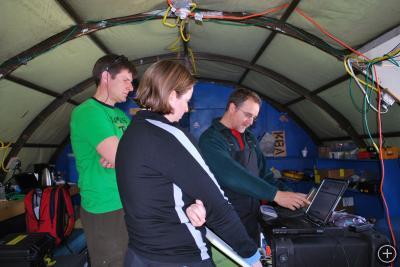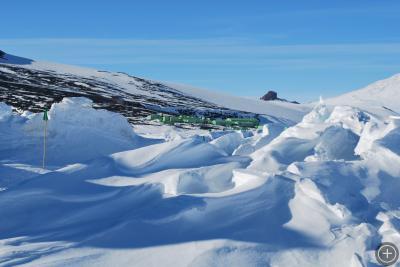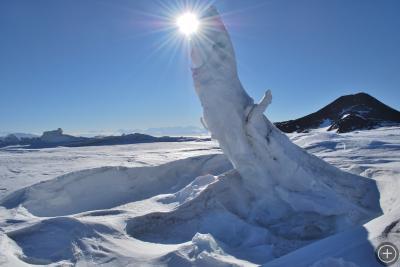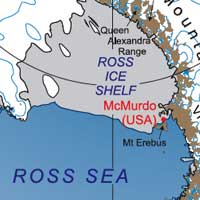The Eve of Discovery
MCMURDO STATION, ANTARCTICA– It has been a rollercoaster week. This time last Friday, I would have been desperate to get my hands on some data. I was the kid that asks for homework. I was aimless and lost without it. Feeling like everyday you are just biding your time is harder when you know that time will soon become too precious. Now, I have spent the week slaving over the data I cravenly awaited. And I’m definitely not asking for anymore homework! In fact, I could use a Spring Break! Mostly I have been making little changes to the software so it can handle the volume of data we are bringing back from the flights. In about 40 seconds, our system collects 457.8MB of just radar data. That’s equivalent to almost 8 hours of music. Handling the data would be easy enough if our flights lasted 80 seconds…. But they are 2,4, even 6 hours long. Radar data comes in massive chunks!

Because being at high altitude can make some people sick, the science team has to be trained on multiple parts of the airplane’s science equipment.
During June this year, we tested our radar system in Greenland. We flew over the Greenland Ice Sheet, collecting data to image the ice down to 2.5 km (1.6 miles) below the lake-spotted surface. Now in Antarctica, we face the challenge of imaging more than 4 km of ice…. That’s 2.5 miles of frozen history between our science team and the Gamburtsev Mountains we came here to study! Because we have to reach further into the ice, we have more data than ever coming back after each flight. There’s so much data that the system chokes on it and gasps, “Help me, Adrienne. Help!”
I have escaped the office a few times this week. I got to go on a tour of the pressure ridges that form between the flowing ice of the Ross Ice Shelf and the rock that stands firm against it. And just last night, I escaped to Scott Base, the Antarctic Base that belongs to New Zealand, for some retail therapy. My Scott Excursion really took my mind off of the software for a while and had me refreshed and ready to go back to Radar World this morning. Not to mention I am well stocked on wooly base layers to fight the cold.
Today, I feel the same way I do when I am at the top of the big hill at the beginning of the ride. There’s that moment when you lift off your seat before powering down the steep hill, screaming your head off. I have been living there, in that emotional suspension for 3 days. Part of my jitteriness the last few days is undoubtedly rooted in the fact I’ll be going to the South Pole on Monday. According to our medical briefing, that means I’ll be perpetually short of breath, having trouble sleeping and going to the bathroom about every 20 minutes for 2 days…. The anticipation is almost too much to hold in! I have been to 10,000ft elevation before but that was after living at 6,500ft above sea level for 5 weeks… and that was in Utah. The transition from sea level here in McMurdo to 10,000ft is such a surprise to the system that everyone is prescribed a medication to help our bodies adjust to the lower oxygen levels. On top of that, we all have to fight off the adrenaline brought on by the fact we’re in Antarctica, at The South Pole, at 10,000ft—no offense to Utah, but it doesn’t compare! Just in case we don’t adjust to the elevation, everyone has been learning tasks outside their specialty. Hopefully, if someone gets sick, we’ll be able to keep the science moving forward, even if at a slower pace.
In the end, it’s not just where we’ll be a week from now. It’s what we’ll learn. The Gamburtsev Mountains have been enigmatic since their happenstance discovery in 1958. Soon, we’ll know them in a way only dreamt of until now. The people on this science team will learn more about the Mountains than the rest of the world has compiled in the last 50 years. This is the Eve of Discovery.













Awesome photo of the Pressure Ridges snow formation. I think it looks like a whale shooting out of the water. An obvious conclusion?
The formation looks like “banana man” waking up and taking a good stretch. He even has a smile on his face, but we all know it’s a alien life form.
Very exciting information about the collection of data.
The best thing about the pressure ridges is how they are constantly changing! Now that I have been to AGAP and back, the ridges are totally different than before. Also, the ice is thinner now and seals have started hanging out near the ridges. More to see there than ever before!
Looks like a sundial to me, but as a chronometer it would stop for half the year.